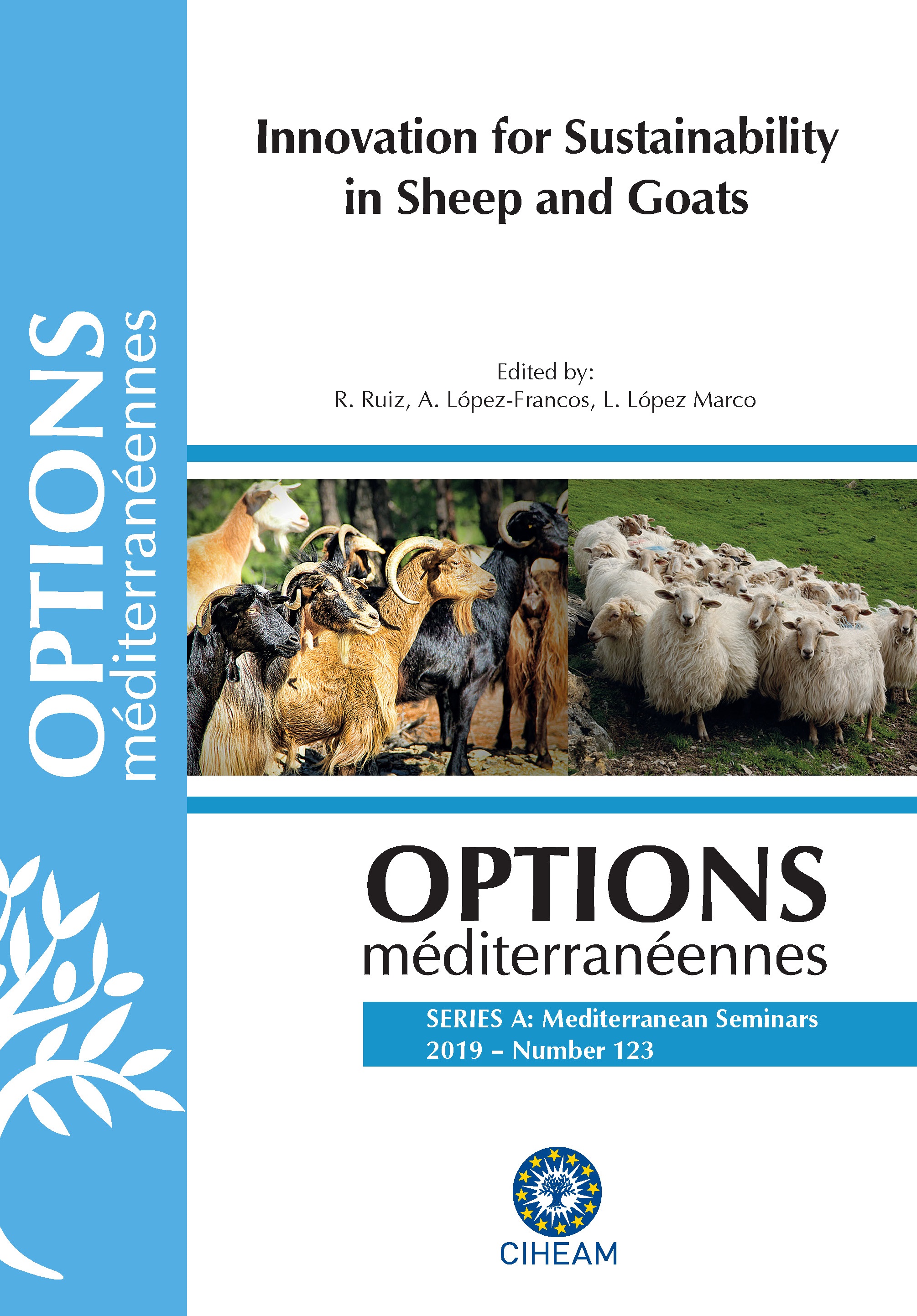| Article précédent | p. 445-449 | Article suivant |
Sensory and microbiological evaluation of Drâa goat cheese and study of its stability during storage
Goat cheese in the oasis regions of Morocco remains a poorly characterized and studied product, in spite of the genetic potential of the oases and the efforts deployed by the Moroccan State to promote this dairy product. The present work aims to contribute to the characterization of Drâa goat cheese through (i) sensory and microbiological evaluation and (ii) studying stability of this cheese during storage. Thus, 8 cheese bars (from a milk mixture of at least 2 goats / cheese tablet) have been produced at the laboratory scale. The microbiological and sensorial characteristics of cheese were determinated. The stability study was focused on the monitoring of 3 parameters: fungal flora, drying rate and lactic acid content at intervals of 0, 8 and 16 days of storage. The results show that Drâa goat cheese contains (CFU/ml) respectively: 8,33.10+08, 9,35.10+06, 2,17.10+04 and 6,83.10+03 of lactic acid bacteria, psychrotrophic bacteria, yeast and Molds. Sensory analysis revealed a highly significant difference between the Drâa cheese and that produced with Alpine goat milk. The scores obtained by the hedonic test are 5.3/10 for the odor, 4.9/10 for the taste and 5.9/10 for the consistency. For the storage of Drâa cheese, it was concluded that the acidity (P = 0.03) and the fungal flora, yeast (P = 0.004) and molds (P = 0.003), increased with a significant manner during the 16 days of cold storage; however, no significant difference was recorded for water content.
Le fromage de chèvre des zones oasiennes du Maroc reste une denrée alimentaire mal caractérisée et étudiée, malgré le potentiel génétique de la race Drâa et les efforts déployés par l’état Marocain pour la promotion de ce produit laitier en lien avec l’image des oasis. Le présent travail se propose de contribuer à la caractérisation du fromage de chèvre Drâa à travers (i) une évaluation sensorielle et microbiologique et (ii) une étude de stabilité de ce fromage au cours du stockage. Ainsi, 8 tablettes de fromage (issues d’un mélange du lait de 2 chèvres au moins/tablette) ont été fabriquées et caractérisées de point de vue microbiologique et sensoriel en laboratoire. L’étude de stabilité a porté sur le suivi de 3 paramètres : flore fongique, taux de desséchement et la teneur en acide lactique à des intervalles de 0, 8 et 16 jours du stockage. Les résultats montrent que le fromage de la chèvre Drâa renferme (en CFU/ml) respectivement 8,33.10+08, 9,35.10+06, 2,17.10+04 et 6,83.10+03 de bactéries lactique, bactéries psychrotrophes, levures et moisissures. L’analyse sensorielle a permis de déceler une différence hautement significative entre le fromage de la chèvre Drâa et celui produit avec du lait de la chèvre Alpine. Les scores obtenus par l’épreuve hédonique sont 5.3/10 pour l’odeur, 4.9/10 pour le goût et 5.9/10 pour la consistance. Pour le stockage du fromage Drâa, il a été conclu que l’acidité et la flore fongique connaissent une augmentation significative durant les 16 jours du stockage frigorifique. Cependant, aucune différence significative n’a été enregistrée pour la teneur en eau.
- [ Afficher ]
- [ Télécharger ]
- [ Exporter la citation ]
Vous pouvez télécharger la citation au format :
- [ Imprimer ]
-
Mots-clés
CHEVRE, EVALUATION SENSORIELLE, FROMAGE, MICROBIOLOGIE, STOCKAGECiter cet article
Noutfia Y., Alem C., Filali Zegzouti Y. Sensory and microbiological evaluation of Drâa goat cheese and study of its stability during storage. In : Ruiz R. (ed.), López-Francos A. (ed.), López Marco L. (ed.). Innovation for sustainability in sheep and goats. Zaragoza : CIHEAM, 2019. p. 445-449. (Options Méditerranéennes : Série A. Séminaires Méditerranéens; n. 123). 2. Joint Seminar of the Subnetworks on Nutrition and on Production Systems of the FAO-CIHEAM Network for Research and Development in Sheep and Goats, 2017/10/03-05, Vitoria-Gasteiz (Spain). http://om.ciheam.org/om/pdf/a123/00007928.pdf



